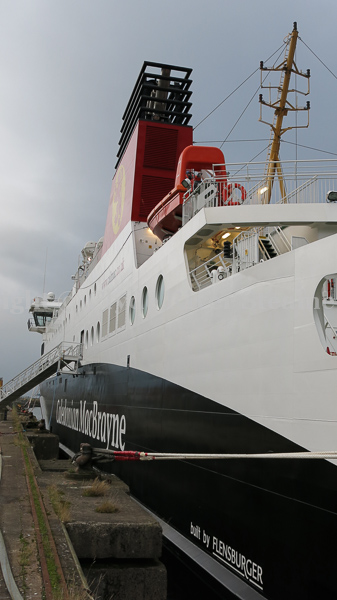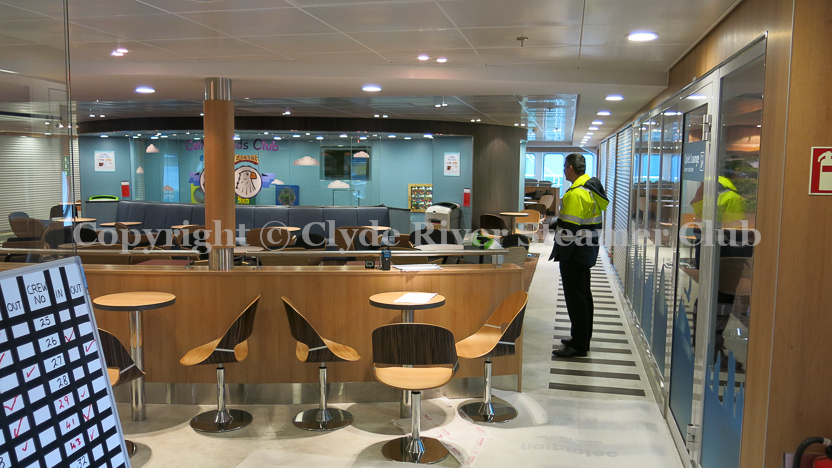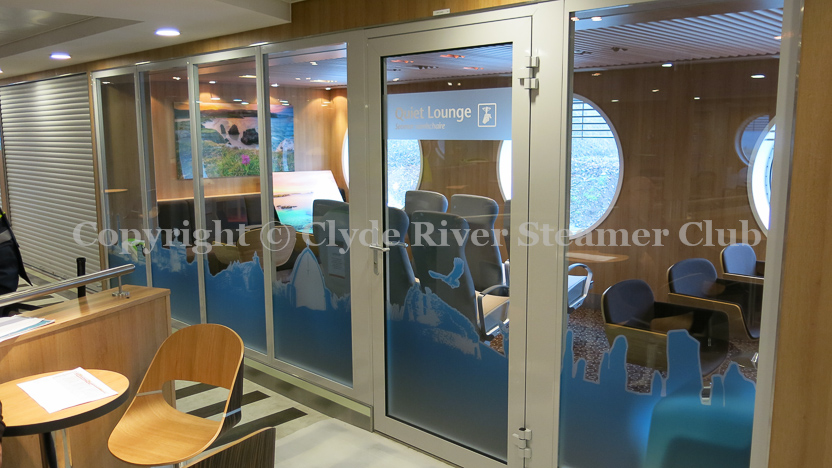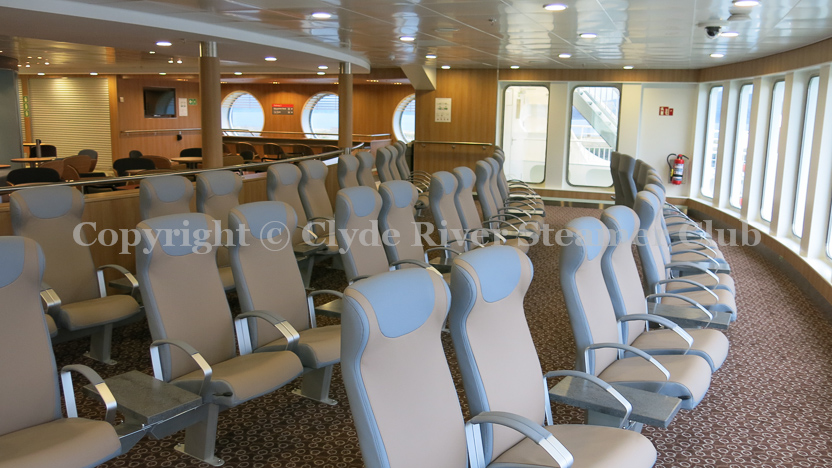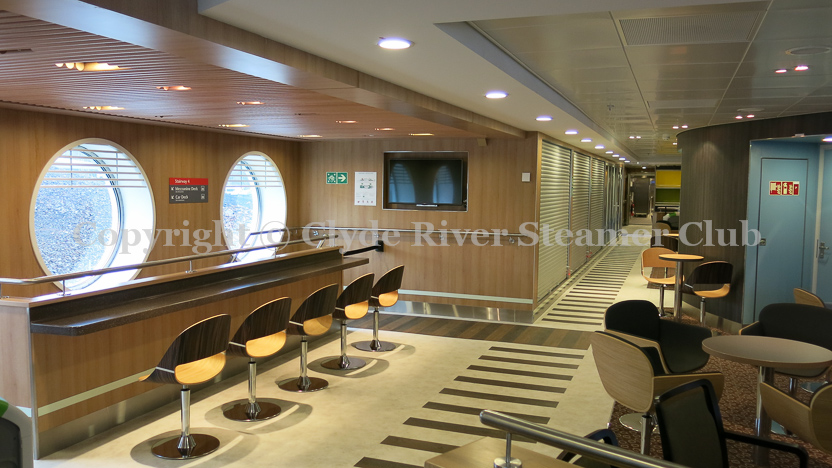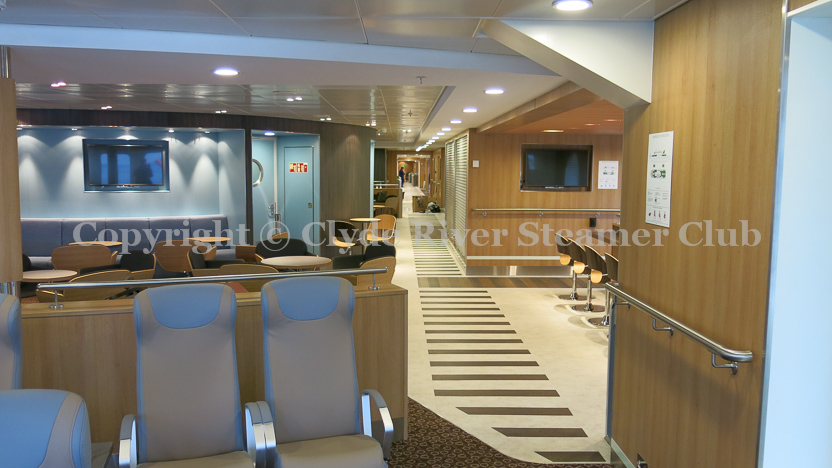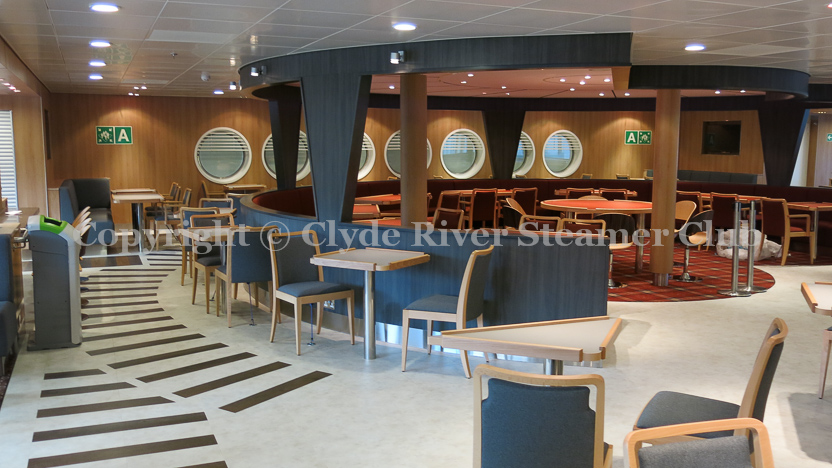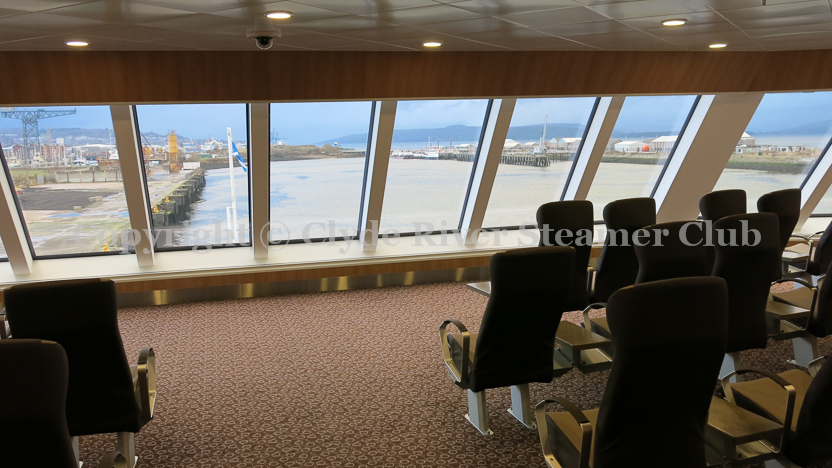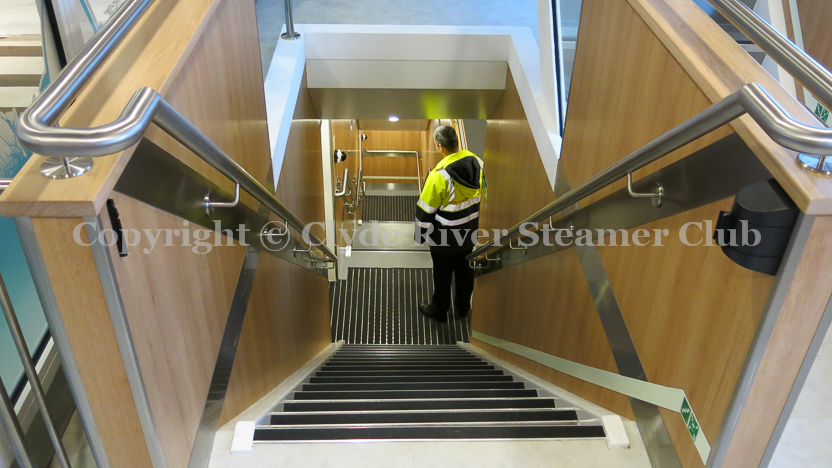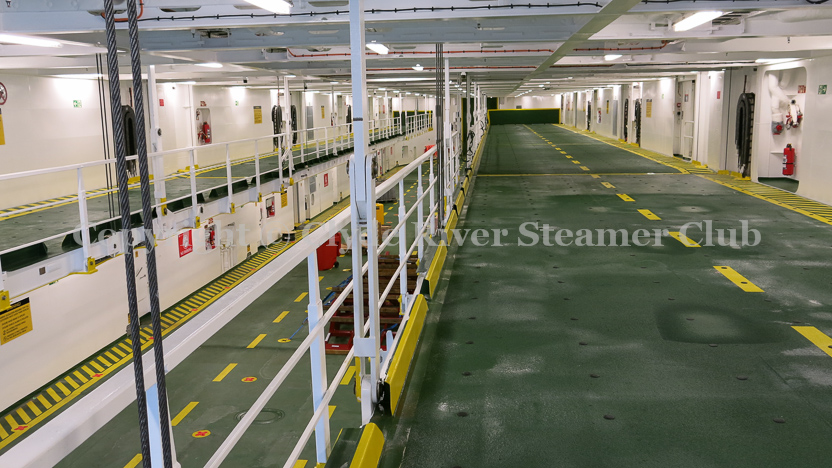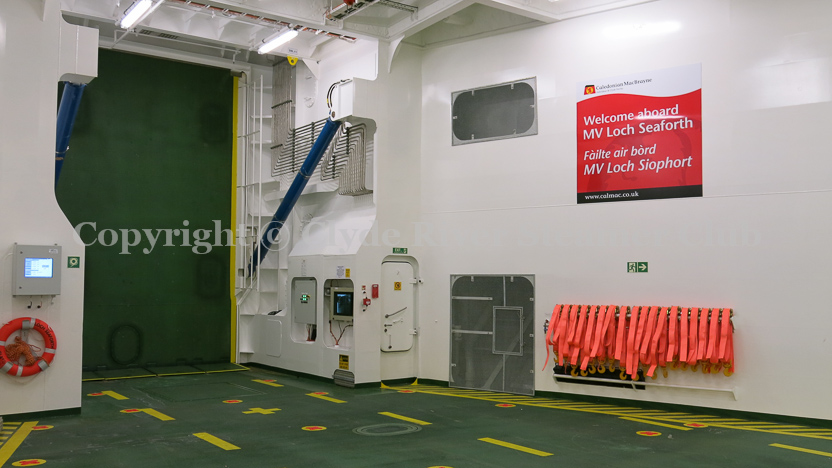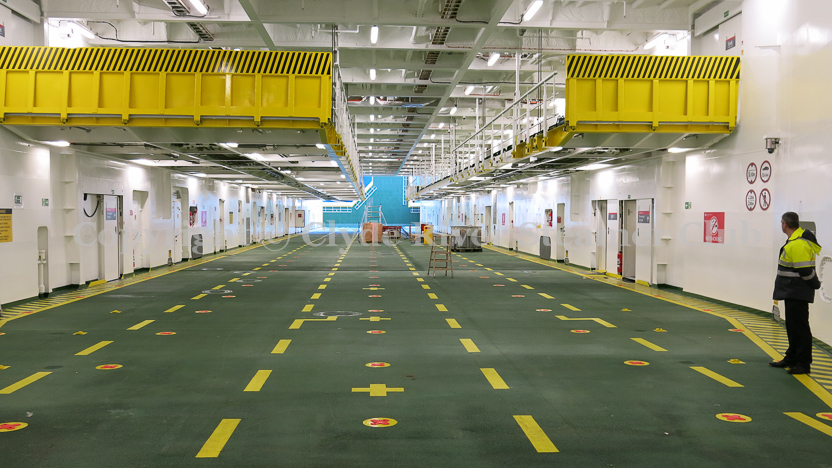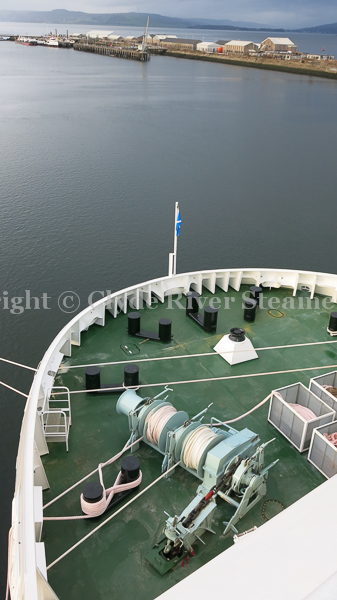Captain Lewis Mackenzie takes CRSC magazine editor Andrew Clark on a tour of the biggest and fastest ship ever commissioned to serve western Scottish waters.
CalMac’s new Stornoway ferry has a maximum speed of 23.5 knots. That’s a fact. During the ship’s six-hour endurance trial in the Baltic before crossing to Scotland last month, Captain Lewis Mackenzie saw for himself how the speed dial nudged up, tantalisingly, to the magical 23.5 mark. It stayed there for no more than a few moments — not even time to grab a camera and record it. But during the same 90-minute spell the dial consistently registered 23.4.
Let’s not get too excited. Loch Seaforth will never reach that speed between Ullapool and Stornoway. Her service speed, calibrated for a crossing time of two and a half hours, is 19.2 knots. Just occasionally, she may skip over that. With a length of 117.9 metres (18 metres longer than Clansman and Hebrides) and a superstructure rising 27.68 metres above water level, it’s good to know she has power in reserve. She’ll need it.
Never in the history of Scottish ferry transport has a new ship generated such feverish anticipation among so many people. Islanders, ship enthusiasts, engineering professionals, crew — all have been caught up in the frenzy over CalMac’s latest acquisition, which arrived on the west coast on November 7 after the delivery voyage from her builders at Flensburg, Germany. Since then, apart from two quick trips to the Minch and trials on the Firth of Clyde, Loch Seaforth has spent the intervening period berthed at Inchgreen, a stone’s throw from Greenock’s James Watt Dock, pending final adjustments. She is expected to make her official debut at Stornoway early in the New Year.
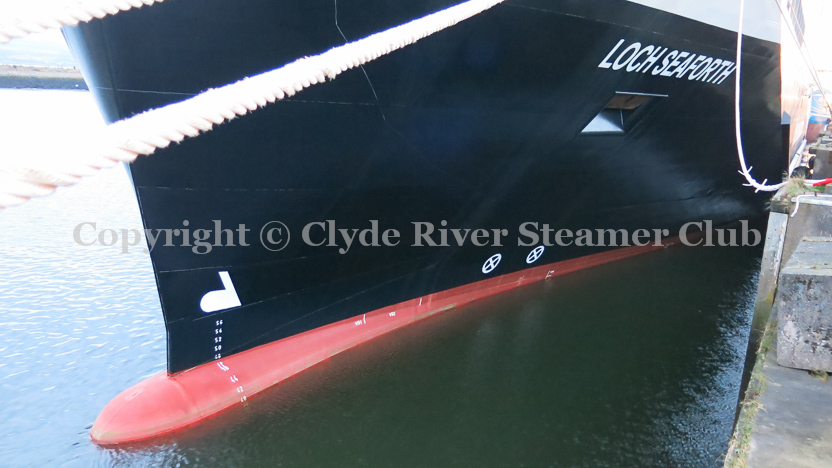 |
 |
 |
|
Loch Seaforth’s axe-bow prow –
a first for CalMac
|
Sleek superstructure,
making a feature of large portholes
|
The way the hull tapers
at the stern is eye-catching
|
Viewing Loch Seaforth during introductory manoeuvres, and studying her close-up at the quayside, you can’t help admiring the individuality of her design and the quality of her finish — all testimony to the skill invested in the ship over the past two years by her builders, by staff at Port Glasgow-based CMAL and by Captain Mackenzie in an advisory role. She slips through the water like a sylph, the opposite of the bulldozer effect of Clansman and Hebrides.
Whether it’s the radical nature of her axe-bow prow, the sleekness of her superstructure or the flare of her paintwork near the stern, Loch Seaforth represents an energising force in Scottish shipping— even before you consider her novel mechanical ‘spec’, a diesel-mechanical/diesel-electric hybrid that makes it possible to run her round the clock 24/7. Her two Wärtsila 8L32 diesel engines are backed up by three auxiliary generators, which can act as a substitute propulsion motor if one of the main diesels has to be shut down for inspection, maintenance or repair.
Given the hype surrounding the £43m ship, expectations are almost impossibly high — as I discovered when I made my way up the gangway at Inchgreen and boarded Loch Seaforth by the port-side passenger entrance, the one intended for Ullapool (embarkation at Stornoway is further forward on the starboard side). Unlike Clansman, Hebrides and Finlaggan, there is no formal entrance lobby on Loch Seaforth, so the initial on-board experience is mildly disorientating. You find yourself on the main accommodation deck (deck 5) in an awkwardly angled space, with no access forward on the port side, a blank wall (the coffee cabin) facing you and, to the right, cafe-style seating giving on to a ‘Kids Club’ area. The space gives no obvious lead for passenger dispersal — other than a passageway heading aft past a ‘quiet lounge’, the opposite direction to the beautifully illuminated luggage racks on the starboard side.
But don’t tell that to Captain Mackenzie, who steps forward to greet me. The ship’s skipper is immensely proud of her: he has been working on the project for more than 18 months, and after spending several months on Germany’s Baltic coast, is happy at last to be presenting his new command to the Scottish public. And let’s be honest: the absence of a welcoming lobby is just about the only design defect I could identify in the course of a two-hour guided tour of the ship. The rest is a revelation — softly coloured, thoughtfully designed, beautifully illuminated, unmistakably comfortable. And all refreshingly open-plan.
Captain Mackenzie, 44, is no stranger to the Minch. With a father from North Tolsta, he has Lewis blood in his veins — and plenty of CalMac experience, having joined the company 20 years ago as second officer of Hebridean Isles. After winning promotion to first officer in 1999, he became relief skipper of Lord of the Isles in 2004 and permanent master of Hebrides two years later. He first captained Isle of Lewis in 2006, and was permanent master in 2012-13 before devoting himself to the ‘Seaforth’ project in September 2013.
Heading aft down the port side, Captain Mackenzie points out the ‘quiet lounge’ with its decorated glass frontage and giant porthole windows (a position occupied on the starboard side by stairs to the car deck). Before we reach the aft lounge, with its panoramic windows and recliner seats, we pass the toilets (moulded finish, no ceramics), a sealed-off area for games machines and a laptop bar with swivel seats.
The aft lounge offers an overview of Loch Seaforth’s unevenly shaped stern ramp. Captain Mackenzie says a little extra width may be added to the ramp once the new Ullapool linkspan is completed: Stornoway has always had a wider linkspan apron.
Moving to the starboard side and now facing forward, an appealingly long perspective opens up, intensified by the stepped effect of the floor decoration. Walking towards the bow, with the main reclining lounge on one side (including two rows for wheelchair access and four for pet owners), and baggage racks, disabled toilets and first aid room on the other side, we reach the Mariners Restaurant, which occupies the entire forward area on deck 5. This has an attractive central rotunda with tartan-style carpeting, a set of height-adjustable tables and a view onto the fo’c’s’le through seven large portholes, which can be covered in winter.
Deck 5 also has numerous lifejacket lockers and two marine escape systems, each comprising a slide and 150-person life-raft (there are additional life-rafts on deck 7).
Passenger accommodation on deck 6 is concentrated forward and consists almost exclusively of a magnificent observation lounge — the same feature that distinguished Loch Seaforth’s 1947 namesake. Fronted by 14 large angled windows, it stretches across the ship’s entire 19.2-metre breadth and features photographic artwork by Colin Cameron Photography, notably two stunning views of the sea loch after which the ship is named.
The rest of deck 6 is devoted to a small truckers’ lounge (nine reclining seats, shower, toilet and four Pullman bunks), a crew mess room and 29 individual crew cabins, all fitted with television, internal telephone, shower/toilet and 850mm porthole: again, plenty of natural light. The 13 officer cabins are on deck 7. A crew service lift ranges from deck 2 (one lower than the car deck) to deck 6. There are two passenger lifts, one from deck 3 (car deck) to deck 7, the other to deck 6. The ship has a passenger capacity of 700 and operates with a crew of 41. Captain Mackenzie will work alternate two-week shifts with Captain John Gillies, with Byron Griffiths as relief master. The ship’s chief engineers are Andrew Weighill, Kenny More and Dan Barton, and the onboard service managers are Tom Nellis and Ross MacDonald.
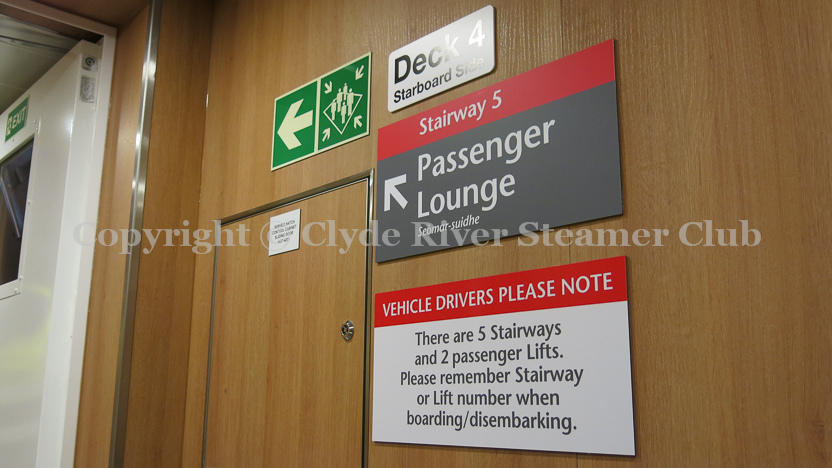 |
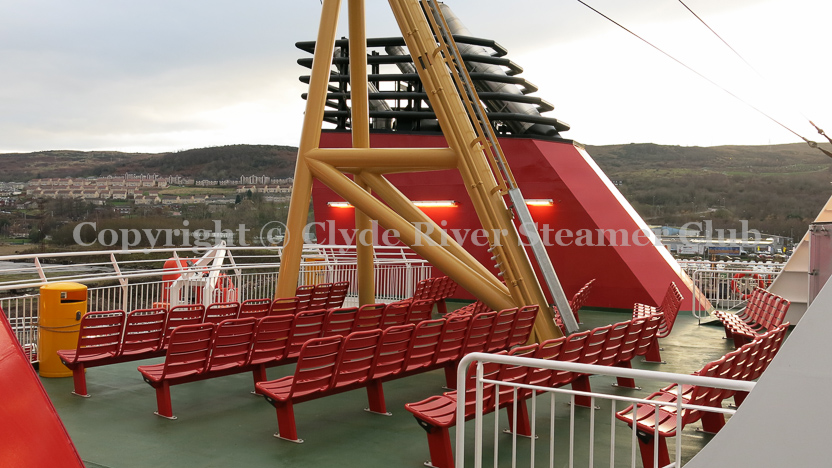 |
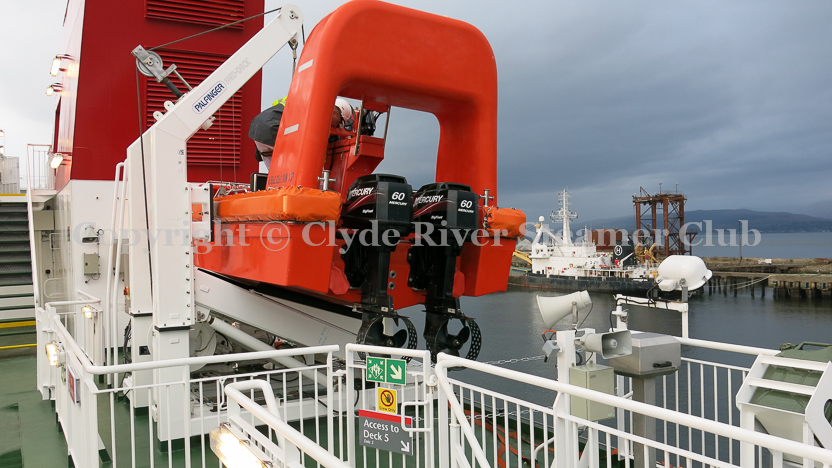 |
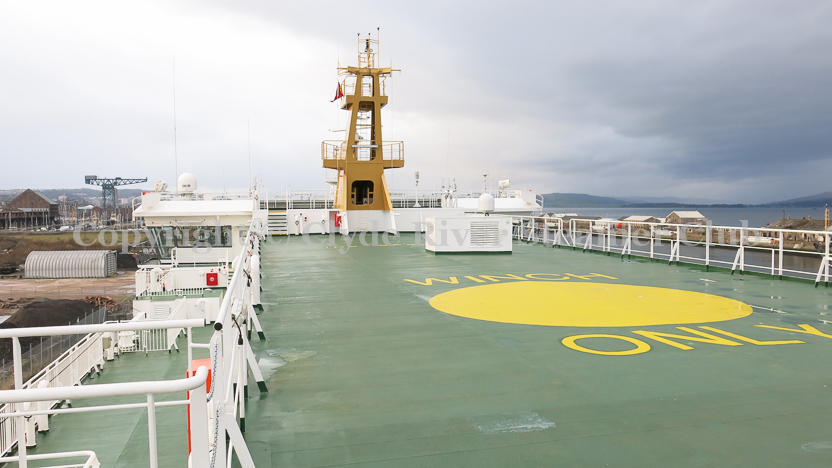 |
|
Signage
|
Smokers’ paradise
|
Fast rescue craft, with
bank of green fuel canisters (right)
|
Game of football?
|
Open deck space is restricted to the aft end of decks 6 and 7, but it should give ample scope for observing the scenery as Loch Seaforth progresses across the Minch. Deck 6 also sports two fast rescue craft, with a bank of fuel canisters at their side. The open area on deck 7, the only space where smoking is allowed, houses the aft mast and parallel funnels, their raked exhausts masked by the same black grilles that were pioneered by Bute and Argyle.
Through a crew-only gate on deck 7, Captain Mackenzie leads me up the steps to deck 8, the open winch area with markings designed to be easily identifiable from a helicopter: the perfect space for a game of football, if only there were nets to stop the ball flying over the side of the ship. Forward from this point we reach the highest point — the ‘monkey island’ above the bridge, where the magnetic compass is lodged. From here we can admire the forward mast, with its two radars and whistle, and a 360-degree panorama.
But what about the ship’s main earner, the vehicle deck? Retracing our steps to deck 5 we go down the starboard-side internal stairway, a harmonious blend of ‘alucore’ panelling and light wood laminate. We stop on deck 4 to size up the mezzanine level — two lanes on the starboard side, one to port, with capacity for up to 39 cars — before proceeding to the car deck itself (deck 3). This resembles not so much a football pitch as a test-drive track, with five spacious lanes and a 5.6-metre clearance above the mid-section, giving Loch Seaforth considerably more height than Clansman and Hebrides. “We have by far the biggest car deck in the fleet,” beams Captain Mackenzie.
We now test one of the lifts — which promptly delivers us to deck 7, from where we mount an internal stairway to the bridge. With its computer screens and state-of-the-art consoles, it feels more like an operations control room than a ferry bridge. Starship Enterprise? “We got the windows right”, says Captain Mackenzie, pointing out that the entire line of windows extends lower than the handrail. “It makes a big difference to overall vision — and you’re standing completely overboard here,” he adds, looking down at the water through a glass floor-plate on the edge of the starboard wing. “You have a clear aft vision and a good overview of the fo’c’s’le. The controls are right by you: the ergonomics are good.”
 |
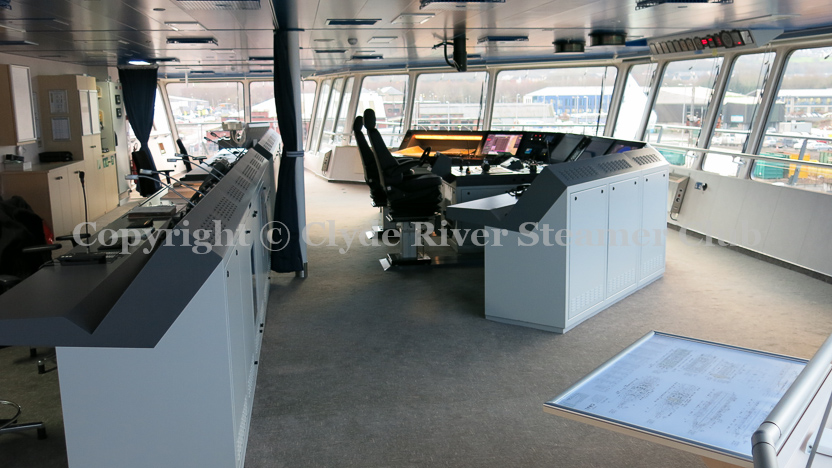 |
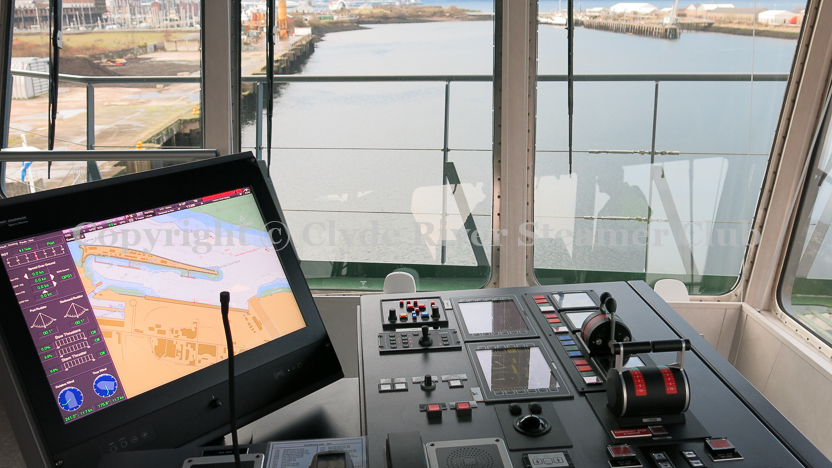 |
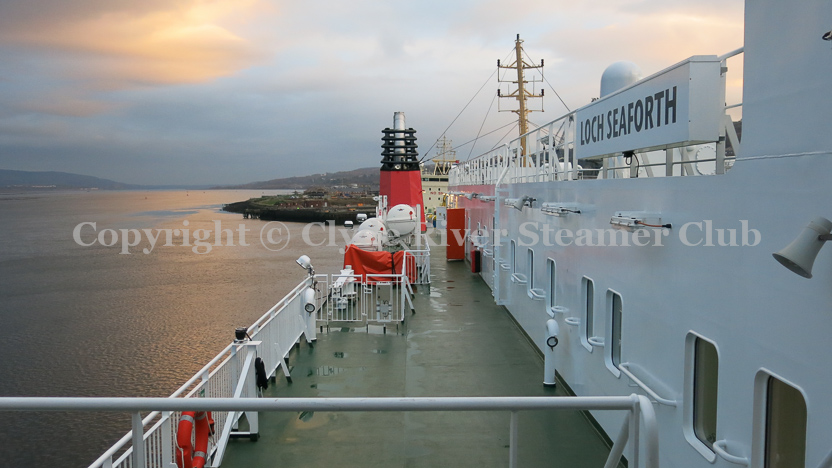 |
|
Starship Enterprise?
|
Bridge windows –
lower than the handrail
|
Starboard bridge-wing console,
looking forward
|
Officers’ cabins
|
Given the power they control, the levers on the bridge-wing look tiny: two bow thrusters managed by one lever, a separate lever for the stern thruster, and two main engine controls; plus two independent rudder controls. Nearer the centre of the bridge we find the stability computers and safety console, showing pictures from 46 cameras positioned strategically round the ship. Other panels monitor the bilge, fire alarm-and-control and main engineering information. Navigating equipment and the main chart table are much the same as Finlaggan’s, but Captain Mackenzie says Loch Seaforth’s Sperry Marine Totalwatch Integrated Bridge System offers ”better user functionality — it gives you more options.”
It’s time for a cup of tea: behind all this dazzling equipment, there’s still room for the common kettle. My final question is probably the most important: how does she handle? “She definitely has the hull-form we were looking for,” says Captain Mackenzie. “She’s a great sea boat, really quiet when going ahead. Coming down the Minch on the delivery voyage, we met a southerly force 10 on the nose, and she performed exceedingly well. On the beam it may be different, but we have stabilisers to reduce any motion. Shipbuilding isn’t easy: you work through so many issues, and in reality there’s always a compromise. But Carsten Ortloff [ship designer at Flensburger Schiffbau-Gesellschaft] did a great job.”
Before returning me to the gangway, Captain Mackenzie sums up with a word of realism. “Like anything new, the more familiar you get with it, the more tuned-in you will be to how it reacts. We need time to bed in to see what the ship is capable of doing. We need to get into the environment for which she was built [before a proper assessment can be made]. But I’m happy with what I’ve seen so far.”
For the most complex ship ever built for Hebridean service, that’s a quietly confident endorsement. The next few weeks will tell how capably Loch Seaforth can meet the challenges awaiting her.
Andrew Clark
December 2014















